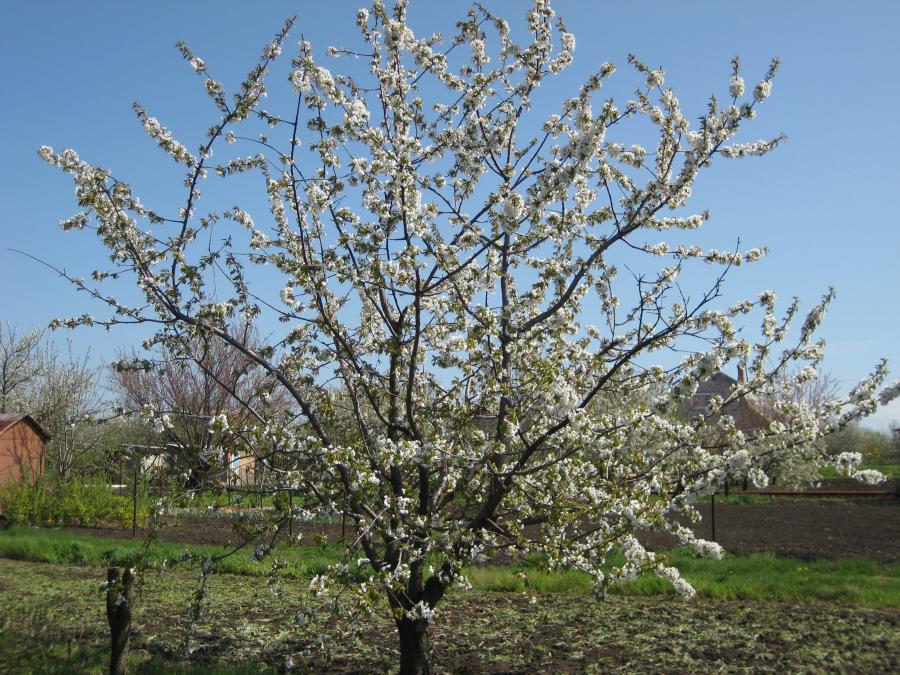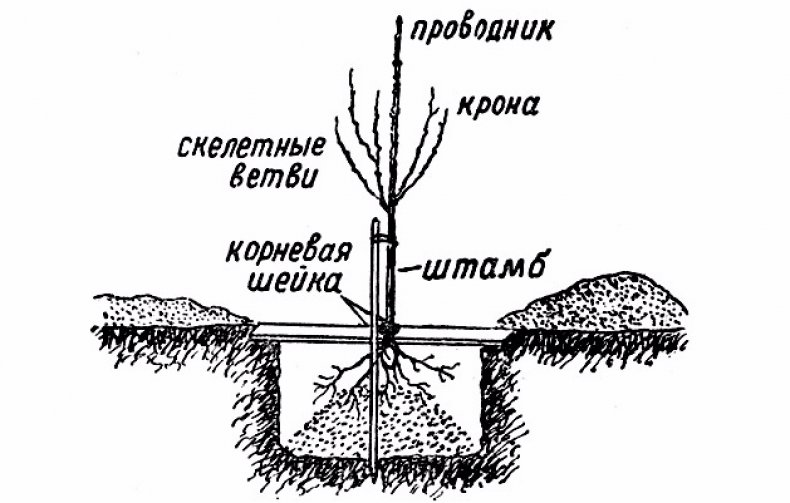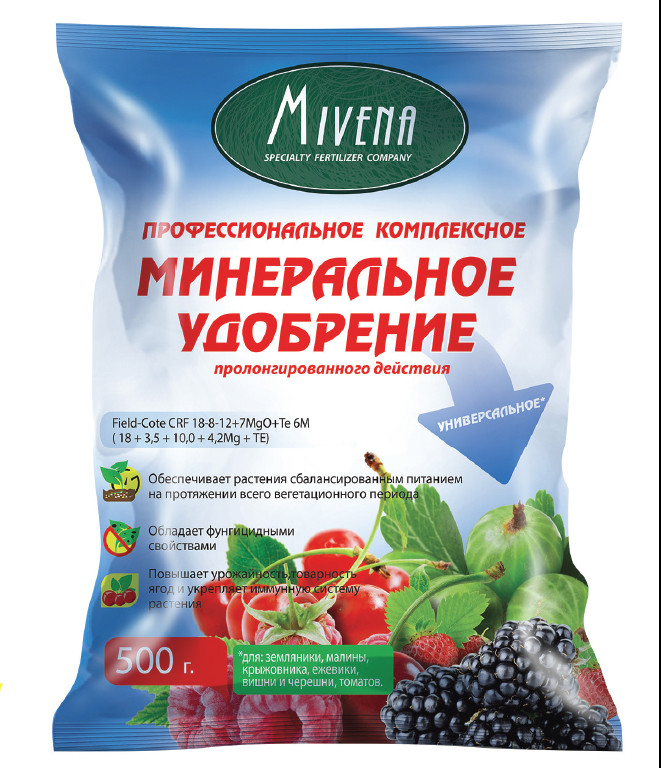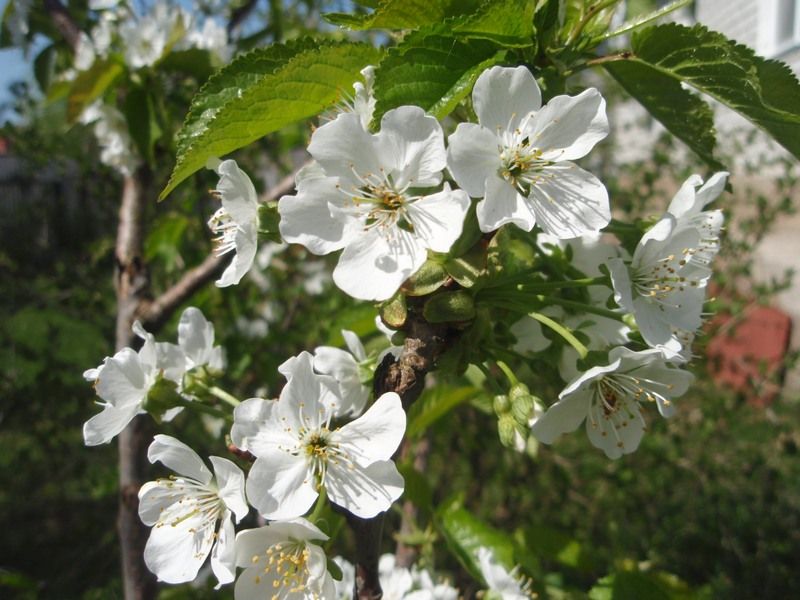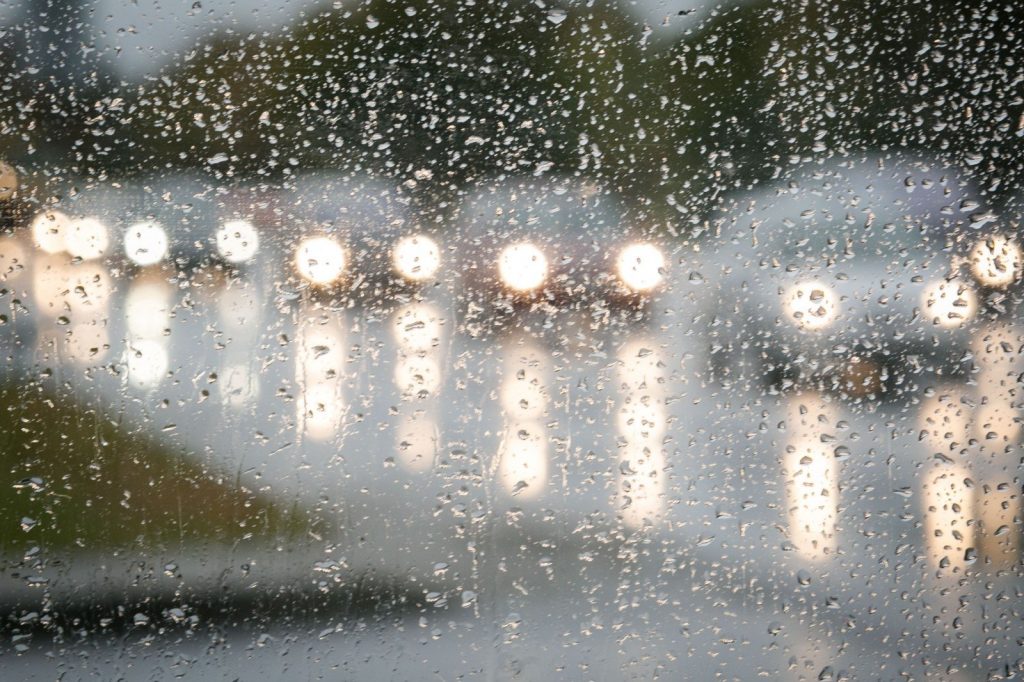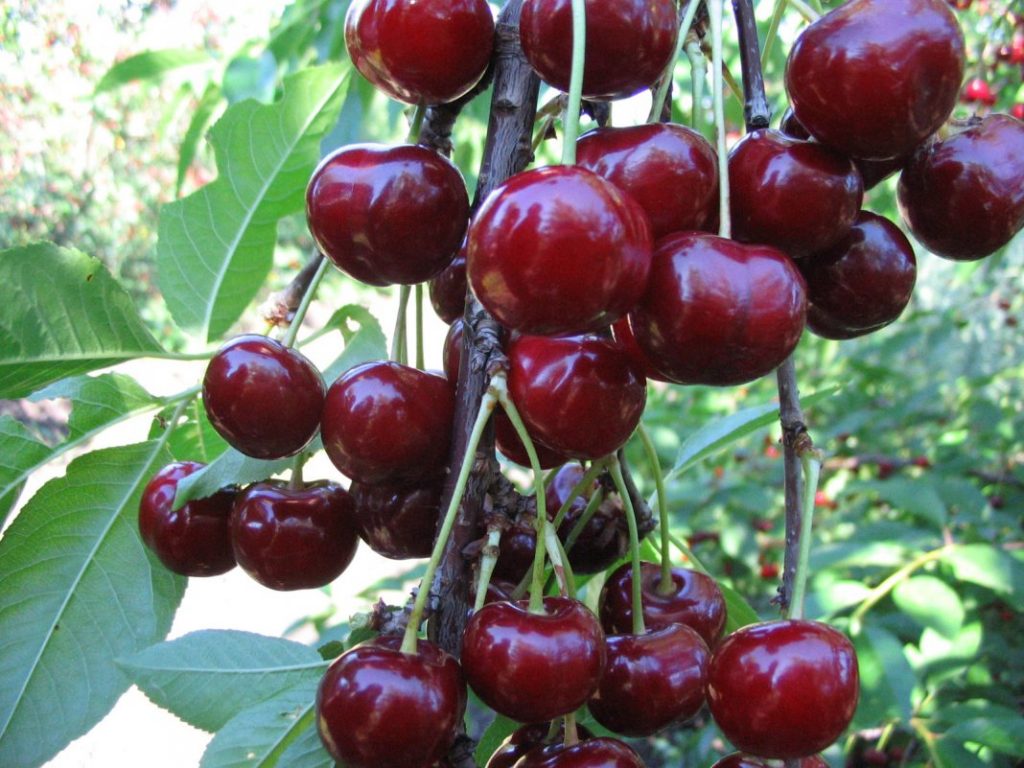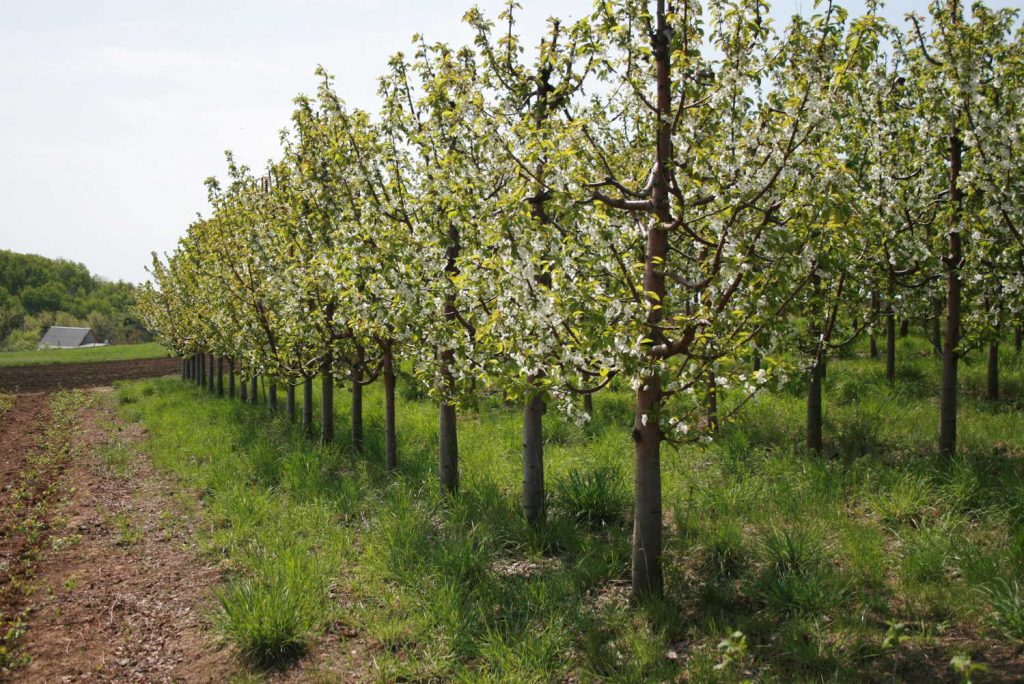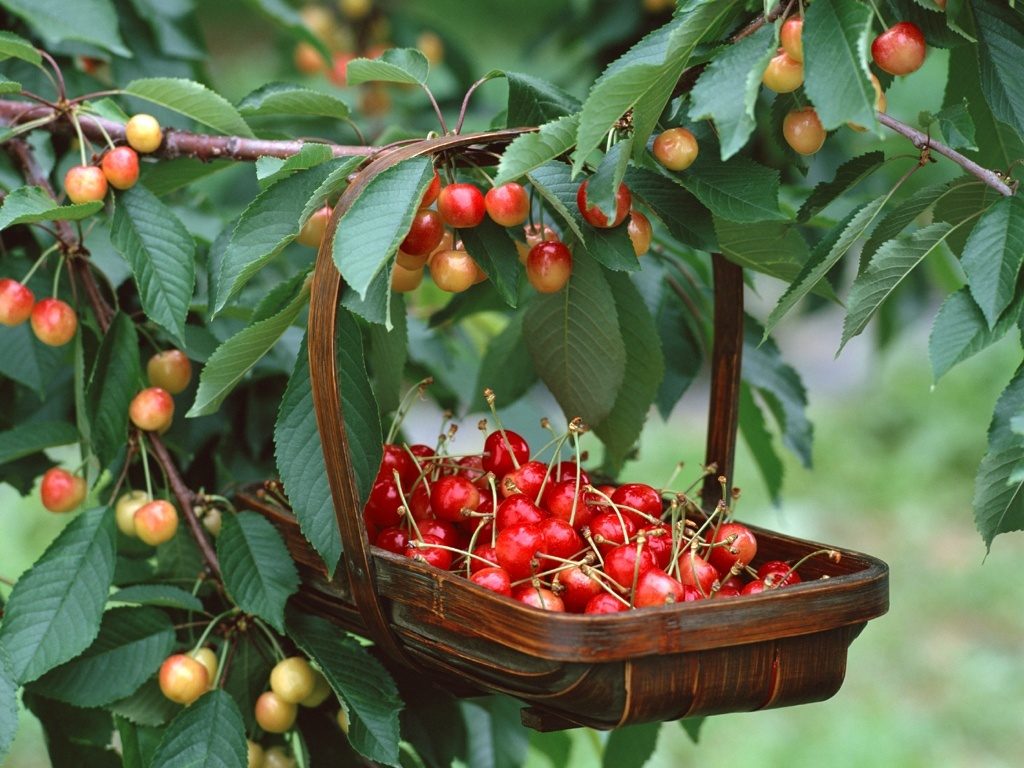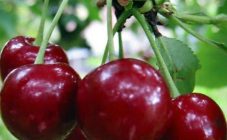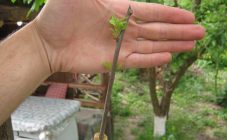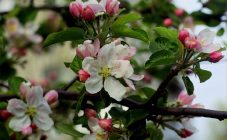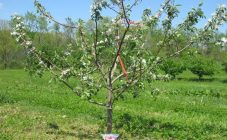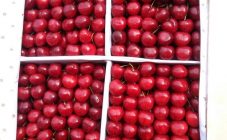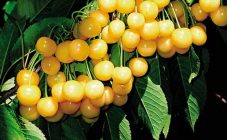Content:
When choosing a cherry variety for a garden, gardeners select a variety that is suitable for a given region. They are interested in how much the cherry tree will grow before the first fruits, and what type of pollination the seedling belongs to. The description for the variety contains all this information.
When cherries begin to bear fruit
It is believed that cherries begin to bear fruit in 4-5 years from the moment of planting. But each variety has its own term, sometimes depending on the quality of planting and care of the seedling. The harvest is small on young trees. At the age of 10, the cherry has a formed crown and since that time gives good yields - from 10 to 30 kg, depending on the variety.
Why cherries do not bear fruit
Sweet cherry is an unpretentious tree that bears fruit every year for many years. Among them there are old-timers who are almost a hundred years old. This is their biological feature. Cherry is less susceptible to attacks of various pests than cherry. But there are times when a tree, according to its characteristics, is productive for some reason, refuses to bear fruit and stands without a crop, like an ornamental tree. Novice gardeners are worried about this fact. Cherry does not bear fruit, what should I do? It is necessary to analyze the most common reasons for the lack of flowering and try not to repeat them.
Flowering time has not come
The fruiting period depends on the variety released in the region. Therefore, buyers need to ask what variety they are taking, as well as for what year the acquired cherry of this variety will bear fruit.
Drop off location
The reason that the cherry does not bloom may be the wrong place. You can expect flowering if the tree is planted in the southern or southwestern part of the garden. The tree does not like drafts, so it should be protected from them and from the cold north wind. The cherry planting guidelines tell you how to plant the tree. If the planting technology was violated, and the root collar was deepened into the ground, this will slow down fruiting. The root collar should be at ground level. Flowering and fruiting is influenced by the proximity of the roots to groundwater. Sweet cherry does not tolerate wetlands and lowlands. In this case, it is recommended to pour drainage into the hole before planting.
The soil where cherries grow
The tree "lives" well on fertile soil with neutral acidity, prefers moderate watering, followed by loosening of the soil for air to reach the roots. It is generally recommended to do three waterings during the summer if the season is too dry. After harvesting, the tree is watered once at the end of September.
Poor lighting of the tree
The cherries should be sufficiently illuminated by direct sunlight, from morning to evening or at least until noon. It should not be in the shade of taller trees. It is recommended to maintain a distance between trees up to 5 meters.
Fertilization
The lack of flowering can be affected by improper care - the tree is not fed with fertilizers on time. Experience shows that the following will be correct: top dressing in autumn with potash (70 g) and phosphorus (200 g) fertilizers, in spring top dressing with urea (70 g).
Sweet cherry can bloom, and even an ovary appears on the branches, but then the tree drops the ovary. This occurs in infertile soil, with a lack of potassium and calcium. This situation can be corrected by applying complex fertilizers to the soil.
Many gardeners fertilize the tree with green fertilizers, to which the cherry responds with abundant flowering and fruiting in the future. To obtain these fertilizers, in summer, gardeners plant peas around the crown of a cherry tree, which they mow down in autumn and buried in the ground.
Pruning
Too thickened crown is a loss of part of the crop. For flowering and fruiting, the tree needs sunlight, which cannot penetrate the middle of the tree through the dense crown and foliage. The crown forms in the form of a bowl over several years. Sunlight will freely penetrate into it, cherries will bloom and bear fruit. In the future, pruning is not done, only dried and damaged branches are removed.
Pests and diseases
To prevent pests from depriving gardeners and summer residents of the sweet cherry harvest, it is recommended to spray the plants with a 3% Bordeaux liquid even before the leaves bloom. During the growing season, the treatment is repeated, but the concentration decreases, a 1% solution is used.
If you eliminate the consequences of the shortcomings that were made when planting cherries, in 2-3 years the owners of the gardens will be able to enjoy its delicious berries. In the future, they will be able to take up activities to increase the fruitfulness of cherries.
Cherry blossoms, but does not bear fruit
Gardeners and summer residents are no less concerned that cherries are in bloom, but do not bear fruit, what to do in this case? This happens when there is no pollination, that is, a self-fertile cherry seedling was purchased, and there is no tree in the garden that would serve as a pollinator. There is a way out of this situation. You still need to plant pollinators - 2-3 more trees, if there is room in the garden.
If beginner gardeners had carefully read the description of the variety before laying the garden, they would have paid attention to the type of pollination, which varieties are compatible for pollination, and would have acquired several cherry seedlings at once. For sweet cherries grown in central Russia, the Iput and Chermashnaya varieties are considered universal pollinators. They are partially self-fertile and, when cross-pollinated, give the berries a pleasant cherry flavor.
But while the pollinating trees grow, if there is a place to plant them, summer residents want to get the harvest that they have been waiting for so long. Alternatively, they can inoculate several branches of cherries of other compatible varieties of the same ripening period to the tree. The grafted branches will bloom in the second year, and this is faster than the newly planted saplings will grow and bloom. Thus, the issue of pollination will be positively resolved, and a miracle tree with branches of different varieties and fruits of different colors and different, but original taste will appear in the garden.
Bees can help the tree to pollinate. To do this, you need to spray the flowering branches with a solution of honey (1 tsp of honey per 1 liter of water). They will also be assistants in calm weather for self-pollinated cherries.
Weather conditions affecting fruiting
Sweet cherry loves the warmth of the sun, rainy weather and winter cold strongly affect the yield. If the weather is rainy during flowering, the harvest may not be expected. Bees do not fly around in this weather, and pollen on flowers is sterilized.
No less harm is caused by frosts, in which trees can freeze slightly. For gardens located in central Russia, it is recommended to choose such varieties of cherries that are resistant to frost. If earlier it was believed that this tree can grow only in the southern regions, now, thanks to the work of breeders, it has perfectly adapted and yields crops annually in regions with severe winters. You just need to choose the right type of tree for your region:
- high winter hardiness of wood - Bryansk rose, Veda, Odrinka;
- good winter hardiness of flower buds - Iput, Bryansk pink, Bryanochka, Fatezh;
- both signs are present - Fatezh, Veda, Iput, Bryanskaya pink and others.
In the cultivated varieties, the breeders managed to make the cherries bloom later, after recurrent frosts, which are detrimental to the awakened tree.
It is good if frost-resistant varieties of cherries grow in the gardens of summer residents of central Russia. But there are also such gardens where ordinary sweet cherries grow, planted several years before the winter-hardy varieties bred. They can freeze when unexpected weather curiosities occur, in the form of severe frosts, return frosts or too early winter. Moreover, flower buds can freeze, or wood turns out to be frozen. Therefore, gardeners are interested in the question: "The cherry is frozen, what to do?"
Signs of freezing cherries
In May - June it is possible to determine exactly how frozen the tree is. Experienced gardeners determine this by the appearance of the tree. Its shoots darken, the bark dies off and becomes dark brown. You should look at the cut of the core of the trunk and branches, if they are brown, this indicates a slight freezing of the branches. To make sure that the branches are not frozen, you need to cut the branches and put them in water for a week, covering them with a film. If a branch is damaged, its buds will not swell or open up. This indicates that the tree is damaged by frost. What if the cherries are still frozen? Experienced gardeners, sharing their practice, believe that the following measures can help in this case:
- If there is weak freezing, you need to prune branches with clear signs indicating this, before budding, with severe freezing, you need to wait for the moment when the tree begins to grow, and then prune the frozen branches;
- Spray frozen trees with cold water before sunrise. Timely spraying allows the branches of the crown to thaw for a long time, removing small ice crystals from the cells under conditions of slow heating by the rays of the sun. Do not spray with warm water - it will doom the tree to death.
Severe frosts can freeze the trunk and skeletal branches, and frost cracks appear from sudden temperature changes. They are cleaned and disinfected with copper sulfate. The "wounds" are sealed with garden pitch.
There are cases when, in severe frosts, the cherry froze and gave shoots from below. This suggests that the roots of the tree were not damaged. The tree is cut down, leaving the strongest shoot from which a new tree grows. Sometimes sprouts appear only when the tree has already been cut. Two of them are selected and as they grow, one, the strongest, is left. The trees obtained from such a growth do not need to be grafted, since they retain the properties of the mother tree.
Experienced gardeners do not stop tending the trees in the garden during the winter. To prevent the trees from freezing in winter, preventive measures must be taken. If snow has covered the branches in winter, this is good for the trees. But you must not allow snow to lie on them during the thaw. At this time, it sticks to the branches, turning into ice. As a result, buds under the ice can freeze out or, even worse, even strong branches can break. Gardeners keep an eye on this, and they always shake the wet snow from the trees, and trample the snow under the trunk to protect it from rodents.
Answers to common questions
Quite often, novice gardeners have a question about the fruiting of sweet cherry if it grows alone. Experts, relying on their own experience, explain that single cherries, no matter what sort they are, do not give a big harvest, even if they are self-fertile varieties. Only 50% of the possible harvest is formed on it. If a tree with cross-pollination grew nearby, the yield would be 100%.If a lone tree with cross-pollination is growing, then the likelihood of fruiting is even less. What to do in this case is indicated in the article above.
The question that worries both summer residents and gardeners about poor tree growth and poor fruiting is associated only with poor tree care and violation of agricultural technology. A detailed answer to it is given in the article.
Summarizing the above, in order to get a good harvest of the selected cherry variety, you must:
- Have several cherry trees in the garden that meet the needs of gardeners and summer residents for good pollination. The varieties must be winter-hardy, high-yielding, fruitful, large-fruited, with separating seeds;
- Correctly comply with agrotechnical requirements regarding the choice of location and soil;
- Carry out timely feeding, mulching, pruning and watering;
- Monitor the condition of trees and take preventive measures to combat pests and diseases;
- Try to prevent frostbite of trees by taking measures to protect them from frost.
As a result, cherries will delight summer residents, novice gardeners and owners of home gardens with a good harvest.
